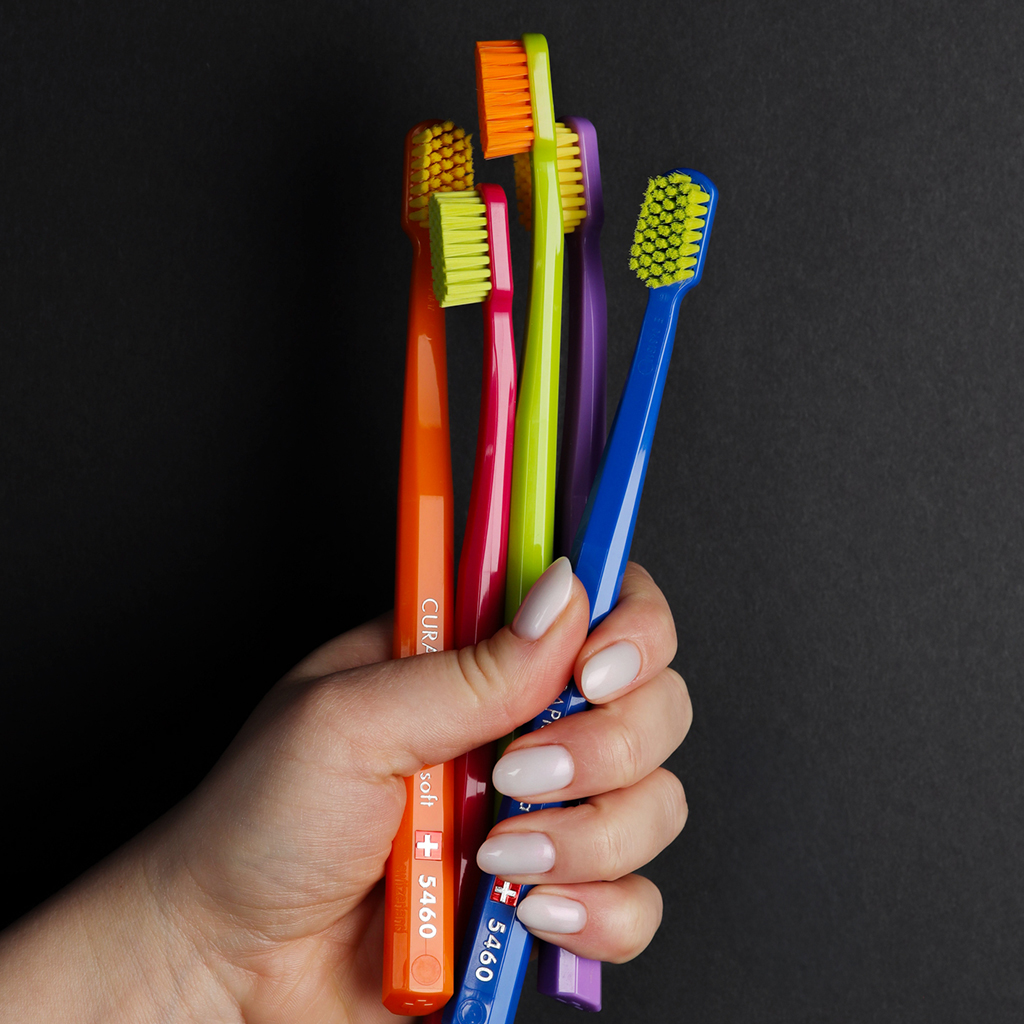

During orthodontic treatment, maintaining optimal oral hygiene is crucial for achieving successful results and preserving oral health. Wearing orthodontic appliances introduces extra challenges in cleaning your teeth and increases the risk of bacterial buildup and other oral issues. Regular tooth brushing, using interdental brushes, dental floss, oral irrigators, and mouthwash are essential steps to keep your teeth and gums clean and healthy throughout the course of orthodontic therapy.
For fixed braces
Before starting treatment, all teeth must be healthy, and oral hygiene must be adequate to maintain healthy teeth and gums. In some cases, if a patient does not maintain proper oral hygiene, the orthodontist may pause treatment and remove the fixed braces. While wearing fixed braces, it is essential to pay special attention to maintaining optimal oral hygiene. Here are some helpful tips to achieve this:
Regular Brushing: Brush your teeth at least twice a day, ideally after each meal, using a medium-soft toothbrush.
How to use a toothbrush:
Use of Fluoride Products: Fluoride strengthens tooth enamel and helps prevent cavities. Use fluoride toothpaste or other fluoride products as recommended by your dentist.
Using dental floss:
Using interdental brushes:
Brushing the tongue
U većini slučajeva zub se može popraviti i tijekom ortodontske terapije, ali je tada potrebno ukloniti ortodontsku žicu.
For clear aligners
Maintaining oral hygiene is just as important when wearing clear aligners. Here are some helpful tips:
CARE FOR FIXED ORTHODONTIC BRACES AND ORAL HEALTH
Treatment with fixed orthodontic braces requires careful and regular tooth brushing.
Maintaining oral hygiene can be challenging, as food particles and plaque tend to accumulate along the edges of the brackets and the gums.
Therefore, it is essential to thoroughly clean your teeth after every meal during treatment to prevent cavities and gum inflammation.
Enamel demineralization is a defect often observed after orthodontic treatment when oral hygiene has been insufficient.
Demineralization is the early stage of tooth decay, where the enamel prisms have not yet collapsed and no cavities have formed. These lesions can be remineralized using various fluoride-containing products, typically in the form of toothpastes or professional coatings applied by a dentist in the clinic.
Gum inflammation (gingivitis) also commonly develops during orthodontic treatment due to inadequate oral hygiene. The gums become sensitive, swollen, and may bleed during brushing.
If pigmentation stains appear or tartar builds up due to insufficient oral hygiene, contact your dentist.
The procedure takes about 30–45 minutes and does not damage the tooth surface. Air polishing is usually performed in a single visit, often combined with ultrasonic tartar removal.
Since air polishing removes soft deposits from the teeth, while tartar removal targets hard deposits, the hard deposits should be removed first to ensure the air polishing is as effective as possible.
Tartar removal is an individual need for each patient and is usually repeated every 6–8 months.
Air polishing of teeth also depends on the patient’s needs. It is important to note that the procedure can be repeated several times a year, as it is a gentle and non-invasive method for removing stains from the teeth.
Electric toothbrushes with special orthodontic heads and water flossers that use pressurized water to clean around braces can also be used.
Be sure to use interdental brushes, which allow you to clean hard-to-reach areas of your braces during or after regular brushing, removing small food particles that can get trapped in brackets and wires.
For fixed braces, we recommend using dental floss designed for orthodontic care.
These flosses typically include a standard section for regular cleaning, a spongy part that cleans the braces and interdental spaces, and a reinforced edge that cleans beneath the braces.
Rinsing with recommended mouthwashes: Choose alcohol-free mouthwashes with flavors you find pleasant, and use them according to the manufacturer’s instructions.
Eating a healthy diet: Foods rich in vitamins and minerals help maintain the health of your teeth and gums. Increase your intake of fruits, vegetables, and dairy products.
Red wine, black tea, tobacco products, coffee, and foods like beetroot and turmeric can stain the elastic parts of your braces or the white brackets.
Avoid hard and sticky foods: Try to avoid foods like hard bread, hard candies, or sticky treats such as caramel, as they can get stuck in your braces and cause damage.
Monitor for any issues: If you notice any unusual changes in your mouth or teeth, such as pain, swelling, discoloration, or damage to your orthodontic appliance, don’t wait until your next appointment. Schedule a visit with your dentist promptly to address the problem.
If a fixed appliance becomes damaged (a bracket detaches, a wire breaks, etc.), do not attempt to remove parts yourself, as there is a risk of swallowing a piece. If any part of the appliance or wire is accidentally swallowed, contact your orthodontist immediately, who will guide you on the next steps.
Authors: Jelena Lessel Vajentić, DMD, and Doris Matić, Nurse
Source: maminkutak.com